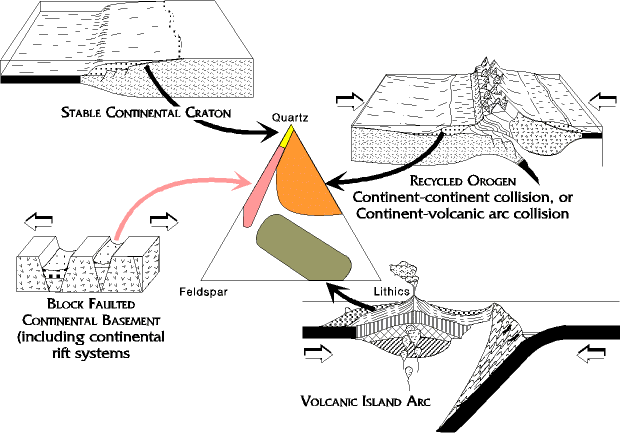
Geologists have worked long and hard to discover just what kinds of information siliciclastic rock composition can give, and how accurate it is. This subject takes a semester course just to introduce, but two kinds of information can be used for interpretations. The first is the actual mineral and rock fragment content of the rock. Because many minerals form only under specific conditions it is possible to identify sourceland composition with some confidence. Specific rock fragments, of course, tell directly what the sourceland is made of.
The second kind of information is empirical (actually observed) evidence of the QFL composition of sandstones derived from specifically known tectonic regimes. Sandstone samples collected from many examples of each of four tectonic regimes have been plotted on a QFL ternary diagram (see illustration below). The shaded fields on the ternary diagram represent the sediment compositions associated with each tectonic regime: stable craton, block faulted continent (including continental rifts), volcanic arcs, and recycled orogens (arc-continent and continent-continent collision mountains). As the ternary diagram shows these fields tend to be distinct, indicating that sandstone composition can be used, judiciously, to make tectonic interpretations.
